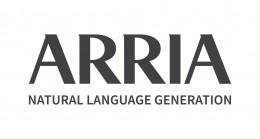Here’s a conundrum. Every day the Met Office website supplies forecasts for 5,000 towns, cities and villages in the UK. Aberdonians get their own specific weather report, as do the good people of Newport Pagnell. Each weather summary is written in the chatty language of weather presenters, talking about “a fair few sunny intervals” and “light to moderate winds throughout”. But as the weather data changes, so must the reports. In fact, the Met Office compiles 150,000 reports a month.
So how do they do it? Clearly the task is too vast for human hands. The solution? The Met Office uses natural language generation. NLG software takes raw data and converts it automatically into natural sounding language. In this case, millions of data points including humidity, air pressure, wind speed and cloud cover are converted into a short paragraph of text. An NLG engine, supplied by AIM-listed Arria, produces each forecast in milliseconds.

NLG is a technology with phenomenal potential. It enables any company dealing with large pools of data to generate written reports automatically. Hospitals are using NLG to write reports on patients, summarising their vital signs in a format that is quick for doctors to read. Asset management companies use NLG to create account summaries for clients. It can take a human hours to comb through multiple trading positions to compile a written report, but NLG can complete the task in seconds.
Natural language generation enables any company dealing with large pools of data to generate written reports automatically
The quality is indistinguishable from language produced by human writers. The system can be tweaked to include trade-specific phrasing and colloquialisms. The language flows in the manner of a native speaker. It’s way beyond template-based sentence construction, with numbers appearing in pre-determined slots. This is true artificial intelligence – semantically-driven language generation.
The output is nearly instant and created for near-zero marginal cost. Surveys show readers often prefer NLG texts. They like the consistency of tone and voice. Auto-generation is more accurate. It ensures there are no slip-ups with numbers or errors caused by lack of attention.
There are applications for NLG in every industry. Take the energy sector. Turbines are fitted with dozens of sensors. Currently engineers need to take the data manually and write maintenance reports. With NLG this can be done automatically.
If a turbine underperforms a site engineer can receive a warning message: “Forward vibration jumped from 0.8g to 2.9g at 17:22. Aft vibration had been stable at around 0.4g, but the typical operating range is 0.5g to 2.0g. Turbine 1 was running during this period. Two earlier maintenance requests (now closed) also examined this alert; no action was taken following these earlier requests.” A decision to repair can be taken in seconds, saving the hours that would be needed for a hand-crafted report.

NLG is now becoming a mainstream business tool, but it’s been around for quite a while. Robert Dale, chief technology officer at Arria, has published more than 160 papers on the topic over 30 years. Arria has provided the NLG service for the Met Office since 2009, during which time it has proved its worth.
Deploying Arria’s NLG solution is pretty simple. The first step is an initial meeting to sketch out potential use-cases. This will include a look at the value the solution will bring to the client. Then a scope of work report is produced, potentially with a proof of concept application. This may then lead to a full-scale implementation.
Any data source can be used. This includes Excel spreadsheets, sensor data, financial reports, PDFs, web analytics, XML files, text-based log files and SQL databases. The NLG solution can be installed on-premise or the data can be sent for processing in the cloud. The scalability is without limit. Thousands of reports can be generated a minute. The tone and formatting of the finished documents can adhere to the client’s branding and specifications.
Which companies should examine the technology? The applications of NLG are so broad they encompass all sectors. Any company which turns data into written reports will find a use. Accountants use NLG to create annual reports. The results of manual labour that took weeks of toil trawling through dozens of data sources can now be achieved in seconds. Oil and gas is a big sector. Arria helps pipeline operators to monitor leaks. Engineers view information on a dashboard and auto-generate reports in line with regulation. A plug-in for IBM’s Watson artificial intelligence engine handles any questions the engineers may pose.
The power of NLG is the ability to turn abstract data into lively and readable text. As data pools grow in size, so will the need to translate this information into something that can be quickly understood. Dr Dale concludes: “By 2020 there will be more text written by machine than by humans.” It’s time for businesses to find out how to make the most of this stunning technology.
To find out more visit Arria.com




